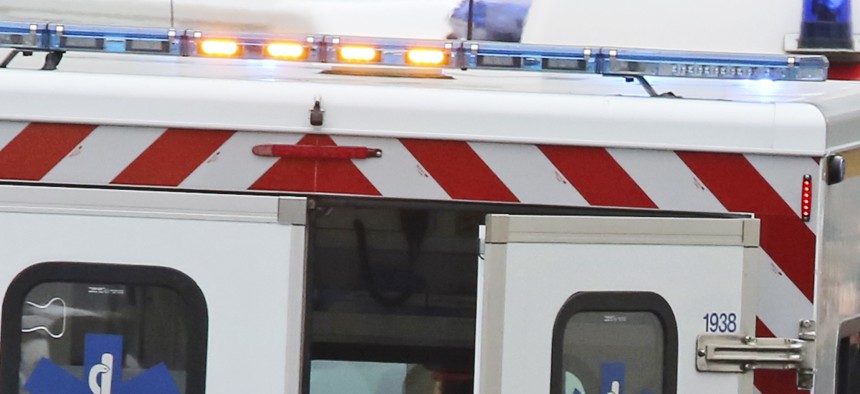
French President Francois Hollande, center, flanked with security forces gestures, as he arrives outside the French satirical newspaper Charlie Hebdo's office, in Paris, Wednesday, Jan 7th AP
Here’s Why Security Cameras Were No Help In Capturing Paris Terrorists
The City of Light is rather dark when it comes to close-circuit security cameras. In the wake of a terrorist attack, what does that mean? By Patrick Tucker
The following story has been updated.
In the aftermath of the terrorist massacre on Charlie Hebdo magazine in Paris, the world is demanding answers. How was it possible that, in a country where guns are heavily regulated, a group of men were able to get their hands on Russian-made Kalashnikov AK-47s, and, possibly, a rocket propelled grenade launcher? What happened to the famously effective French intelligence service? And, most importantly, how was it possible to pull off such an attack in the middle of downtown Paris and then get away via car? Should not a network of closed circuit security cameras been trained on the attackers as they attempted to make their escape?
Update: FRANCE 24 now reports that police have raided a house in Reims in connection with the attack. Arrest warrants have been issued for Cherif Kouachi, 32, and his 34-year-old brother Said Kouachi. A third suspect, 18-year-old Hamyd Mourad from Reims, has reportedly surrendered to police.
Paris is indeed a city with many cameras, but not as many as you might think, and not nearly as many as you might encounter in a city like London. In Paris, the presence of cameras is more controversial.
In 2012, Paris Mayor Bertrand Delanoë of the Socialist Party announced an increase in the number of closed-circuit cameras in downtown Paris by more than 1,100. It was part of a broader plan that the French government voted on in 2007. At the time, there were more than 13,000 cameras in Paris, but these were primarily for traffic enforcement, not watching for crime, according to the French website Owni.
“The goal of the plan was to make public spaces—from shopping and residential areas to public transportation—safer without violating citizens’ civil liberties. In concrete terms, this meant that the city needed to install more video surveillance cameras, restructure coverage of the entire city, and modernize its control system,” the company Citelum, tasked with the implementation of the plan, explains in this release.
A broad plurality of French supported the idea of more cameras in public spaces, but the plan met with resistance from Delanoë’s allies on the political left. Green party councilperson Sylvain Garel told French news outlet FRANCE 24 “We’re heading toward a ‘Big Brother’ world...I don’t want a camera to film me when I’m out in the street buying the newspaper.”
Officials close to Delanoë rebuffed the idea that city had either the will or the ability to turn Paris into a city like London, long said to be the most surveiled city in the world. The problem wasn't civil liberty but management scaling. In London, “there are far too many cameras, far too many images, too many to be looked at,” Delanoë’s security advisor Myriam el-Khomri told FRANCE 24. One day, better image analytics will cut down on that work load. In the meantime, the dilemma of too much footage, too few eyes remains an unfortunate, but typical, big data problem.
In the 11th arrondissement, where Charlie Hebdo’s main offices are located, there were plans for 2.8 cameras for every 10,000 people in 2012. Compare that to London, where there’s a camera for every 11 people. Do they do any good? In the U.K., the utility of the cameras for actually solving crimes is a matter of some debate.
The most important piece of video imagery to emerge from the siege, at least in the hours after the event occurred, was taken on a phone belonging to a person near the scene. The attackers’ escape route from Charlie Hebdo headquarters likely proceeded along the Boulevards Richard Lenoir and de Voltaire, where the city has planted several CCTV cameras, at least according to this map from Owni. More footage could emerge soon.
At very least, the people of Paris may become more welcoming of London-style cameras in the months ahead.
NEXT STORY: Gunmen Open Fire at Paris Magazine, Killing 12




